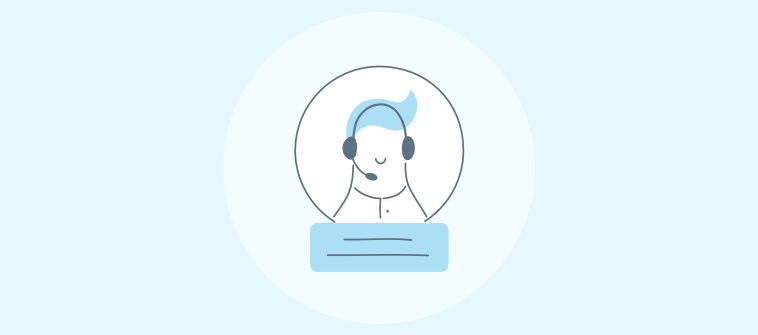I’ve seen it too many times—support teams struggling with outdated on-premise systems or open-source tools that demand constant tweaking. What seems like a smart choice at first turns into a maintenance nightmare, with frequent downtimes, data security concerns, and limited remote access. That’s where cloud-based help desk software comes to the rescue. No hardware to maintain, no complex installations—just a flexible, scalable solution that lets your team focus on what really matters: helping customers. In this blog, I’ll discuss what cloud help desk software is, how it works, and why it’s worth considering. So, let’s get into it!
What Is a Cloud-Based Help Desk?
A cloud-based help desk is an online customer support system that allows businesses to manage, track, and resolve customer issues through the cloud. Unlike traditional on-premise systems, which require you to store and manage data on local servers, cloud-based help desks store everything online. This means your team can access and respond to customer inquiries from anywhere, at any time, as long as they have an internet connection. These platforms typically include features like ticket management, real-time chat, knowledge bases, and reporting tools. They centralize all customer interactions in one place, making it easier for support teams to stay organized and provide fast, efficient service. Plus, cloud-based help desks are getting even smarter with AI features like customer intent analysis, response suggestions, and automated ticket routing. If you want to see how AI can supercharge your support team, check out this short video:
How Does a Cloud-Based Help Desk Work?
Every support ticket goes through a journey—from the moment a customer reports an issue to when it’s successfully resolved. Let me walk you through how a cloud-based ticketing system makes the process smooth and efficient:
Step 1: A Customer Raises a Ticket
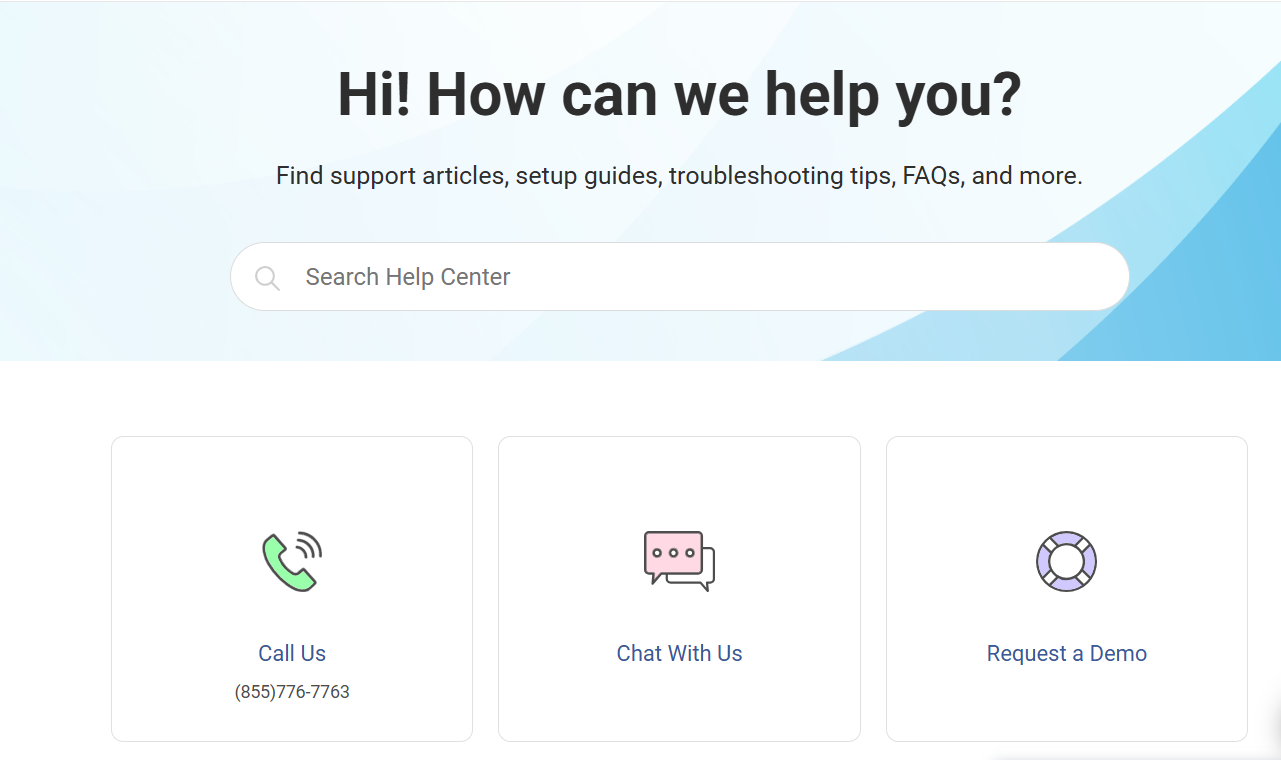
It all starts when a customer reaches out for help. They can submit a request via email, phone, live chat, or even a contact form on your website. Many businesses also offer self-service portals where customers can create tickets directly from an online help center.
Step 2: A New Ticket is Created

Once the message lands in your helpdesk inbox, the system automatically generates a ticket. Agents receive instant notifications so they can jump in and start resolving the issue right away.
Step 3: Agents Access and Assign Tickets
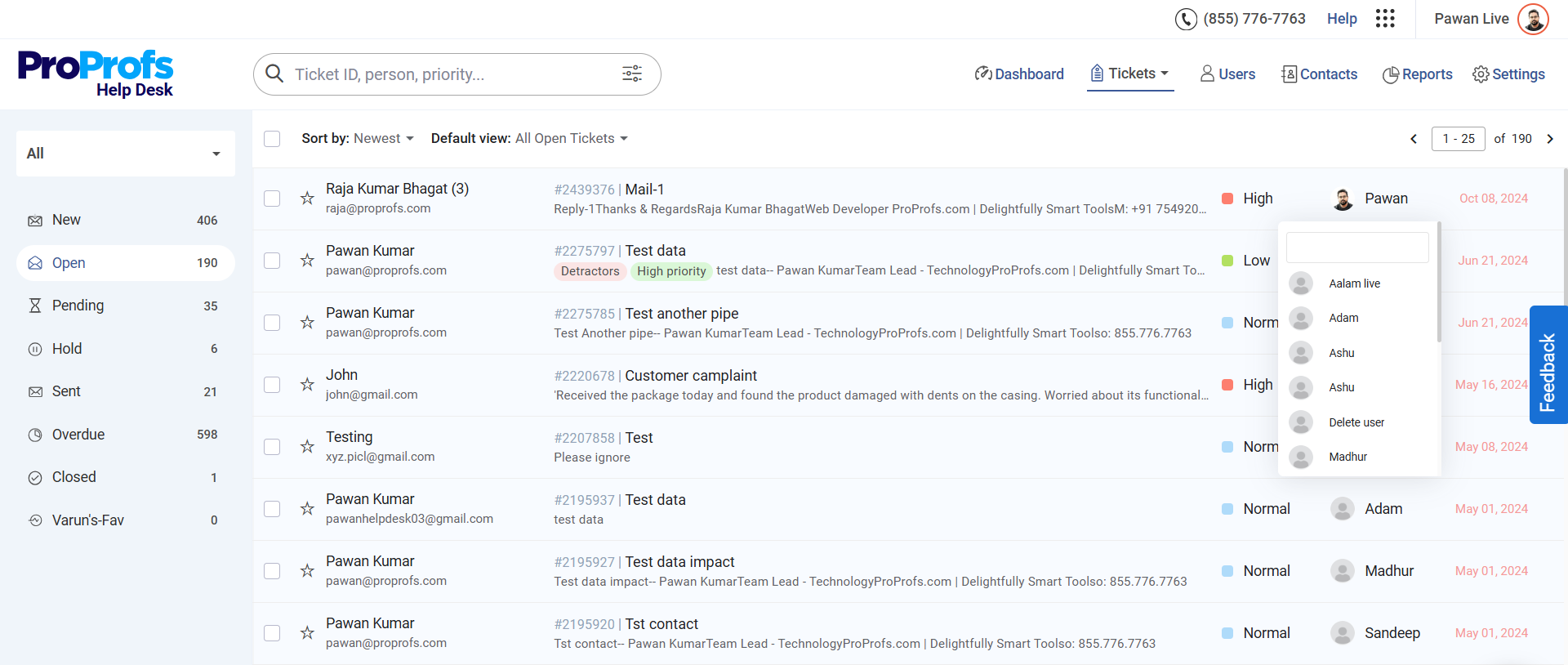
Support agents can access tickets from any device—whether it’s a phone, laptop, or desktop. They can manually assign tickets to team members or use automation (like round-robin distribution) to ensure tickets go to the right person without delay.
Step 4: Resolving the Issue
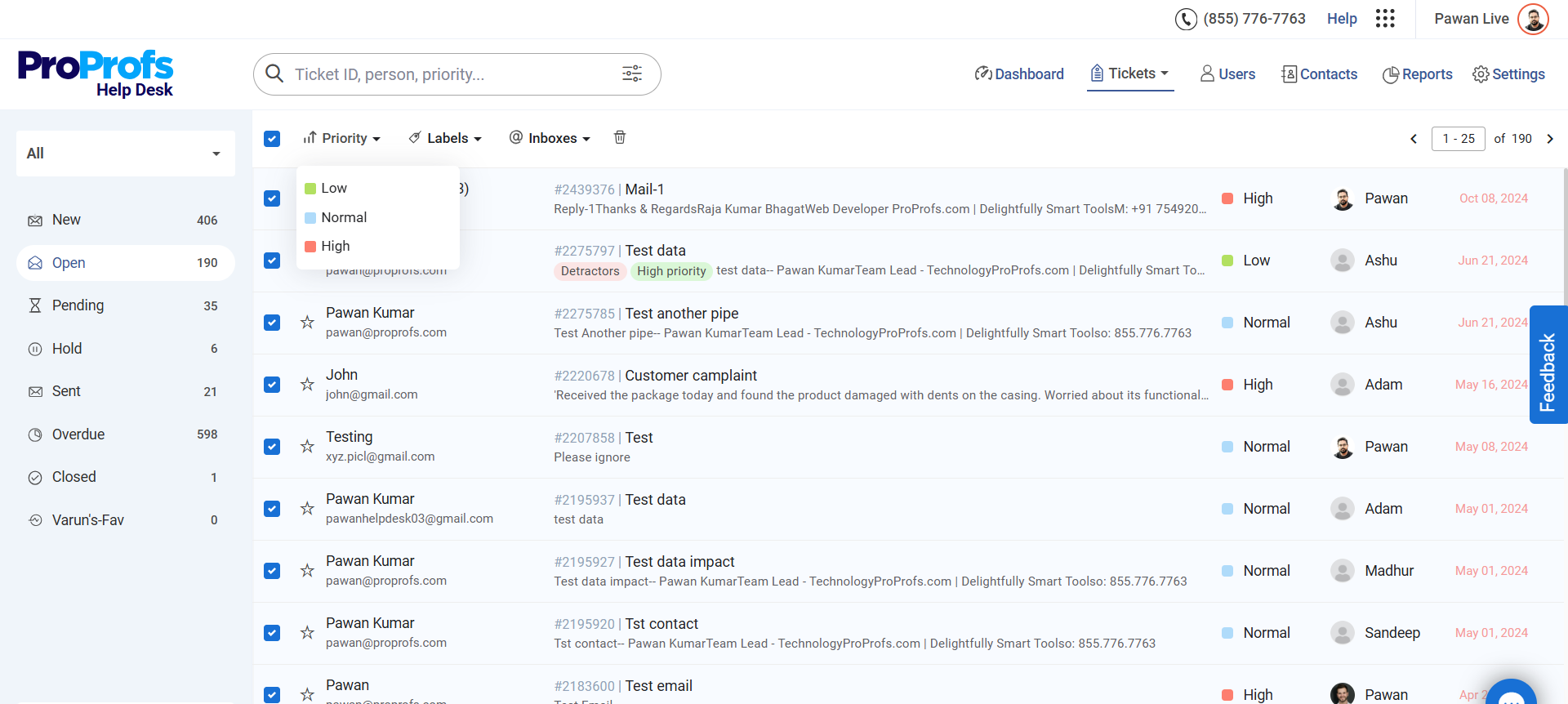
Once assigned, agents take action. They can:
- Set ticket priority (High, Normal, or Low)
- Respond with a solution or request more details
- Add private notes to collaborate with team members
Step 5: Ticket Resolution & Feedback Collection
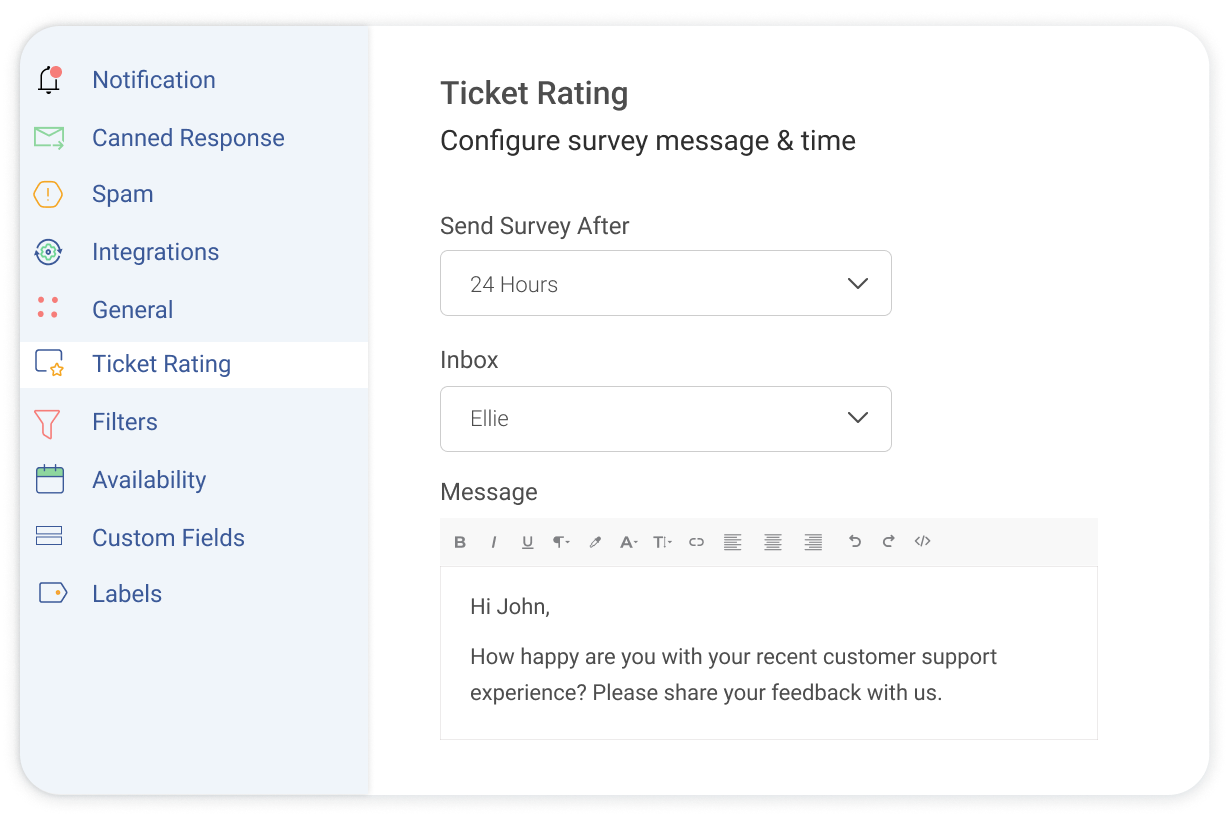
After providing a solution, the agent marks the ticket as resolved. The system then sends an automated customer satisfaction survey, allowing customers to rate their experience. And that’s it! A cloud-based helpdesk makes the entire process seamless, ensuring customers get quick responses and agents can work efficiently from anywhere.
What Are the Advantages of Using Cloud-Based Help Desk Software?
Cloud-based help desks come with a ton of benefits, from easy accessibility to high security. Let me share 10 reasons why moving to a cloud help desk software could make all the difference for your team!
1. See All Your Support Tickets in One Place
Juggling different tools for emails, live chats, and social media can become overwhelming quickly. You might miss a chat while you’re focused on email, or vice versa. With cloud-based help desk software, everything is in one place. Agents can track tickets from email, live chat, social media, and more from a single dashboard. This means they can stay organized, prioritize tasks, and filter tickets by labels, priorities, and inboxes.
2. Access Anytime, Anywhere
Cloud-based systems let your support reps work from anywhere, whether they’re at the office, at home, or even on the go. All they need is a device and an internet connection. Unlike on-premise systems, which only work within the office, cloud-based platforms store all your data securely in the cloud. No more worrying about accessing files or running into roadblocks when you’re not in the office.
3. Always Up to Date with Regular Software Updates
Tired of outdated features and constant glitches? With cloud-based help desks, updates happen automatically, so your team always has access to the latest features. Unlike on-premise systems, you don’t have to worry about installing patches or dealing with system downtimes because everything is managed remotely. This means your team can focus on customer support instead of dealing with tech issues, and you always have access to the latest features and security improvements.
4. Collaborate Better with a Shared Inbox
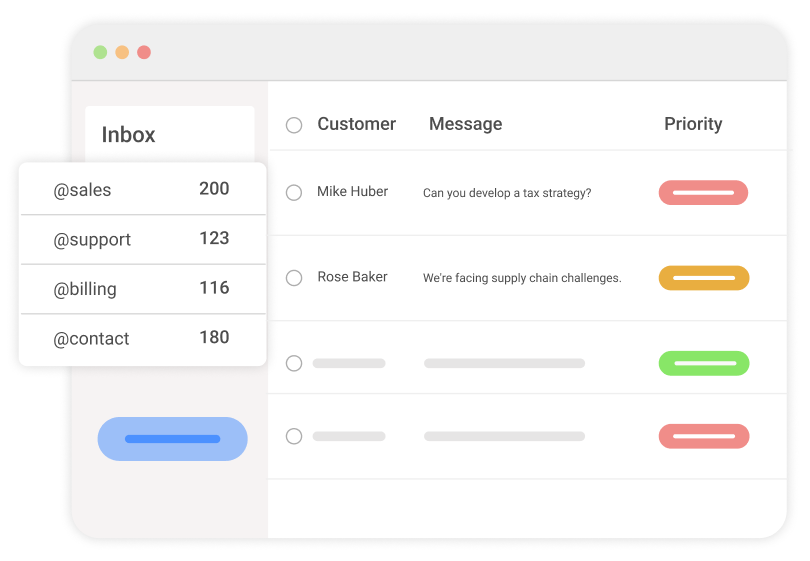
A shared inbox can make team collaboration hassle-free. Instead of wasting time sharing login credentials for different inboxes, your team can access everything from one place.
Features like internal notes, agent collision detection, and parent-child ticketing make it even easier to work together. Agents can add context to tickets, see who’s working on what, and divide up complex tasks by creating child tickets for different departments.
5. Integrate with Your Favorite Tools
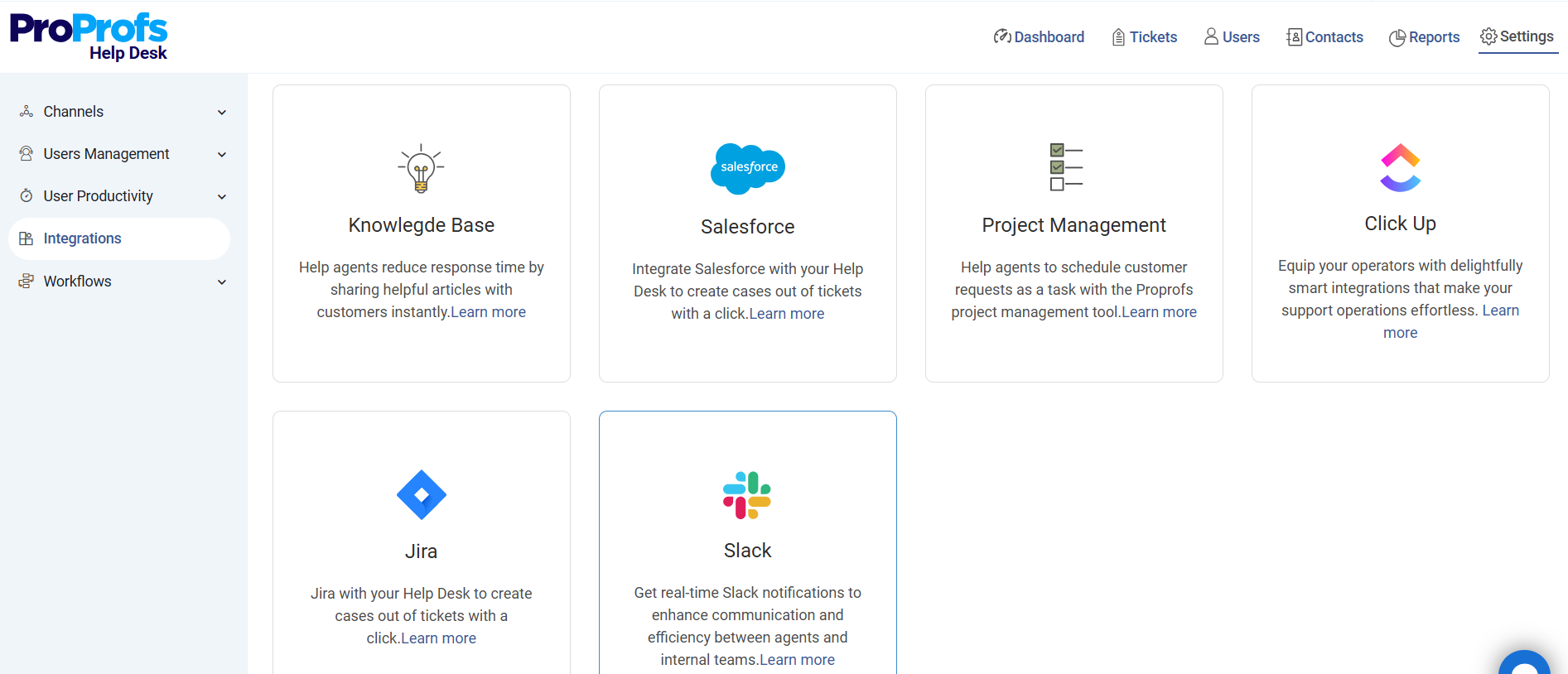
Cloud-based help desks integrate with a wide range of other cloud-based tools. From CRM to project management to e-commerce, the right integrations help your team automate workflows and enhance the customer experience. Imagine being able to pull up a customer’s past orders or interests while responding to a ticket—super helpful, right? These integrations keep all your systems connected and working smoothly.
6. Customize the Tool to Fit Your Needs
Customization is a major perk of cloud-based help desks. You can set up canned responses to save time on frequently asked questions, ensuring quick and consistent replies. Custom fields allow you to collect specific information within tickets, so agents always have the right context. Need to manage access levels? Roles & permissions let you define who can view, edit, or respond to tickets, ensuring security and efficiency across teams. From notifications to personalized chat windows, the cloud-based help desk gives you full control over the experience.
Here’s a quick video showing how you can customize it to fit your needs:
7. Improved Customer Experience
When your support team has access to all the tools and information they need in one place, it’s easier to provide faster and more personalized support. Cloud-based help desks allow your agents to view customer histories, preferences, and past interactions, helping them resolve issues more effectively. This leads to a better overall experience for your customers, which can result in higher satisfaction and loyalty. Plus, the ability to handle more tickets at once ensures that no customer’s request is left behind.
8. Scale as You Grow
As your business grows, your help desk software can grow with you. Whether you’re a startup or a large enterprise, you can find a plan that suits your needs at every stage. Cloud-based tools let you easily scale up or down, offering plans that meet your current needs and help you expand as you grow. You won’t have to worry about outgrowing your software—it’ll grow right alongside your business. Ready to see how a cloud-based help desk can work for your team? Let’s explore your options and get you started on the path to smarter, more efficient support.
When Is the Right Time to Switch From a Traditional Help Desk to a Cloud-Based Help Desk?
Switching from a traditional help desk to a cloud-based help desk software can provide several benefits, but it’s important to know when the time is right. Here are a few signs that it may be time for the transition:
1. Your Team is Growing
As your business expands, so does the need for more efficient support systems. Traditional help desks might not scale well with growing teams, leading to bottlenecks and inefficiencies. A cloud-based system can easily scale to accommodate more tickets, agents, and support channels. With a cloud solution, adding new agents and expanding your infrastructure becomes hassle-free, saving both time and money. Plus, it ensures that customer requests are handled promptly, even as the volume increases.
2. You Need Remote Access
If your support team is working from multiple locations or remotely, a cloud-based help desk is essential. Unlike on-premise systems, cloud solutions allow your agents to access the system from anywhere with an internet connection, improving flexibility and response times. This means that whether your team is working from home, the office, or even while traveling, they’ll always be able to provide timely support. It also allows for a better work-life balance and fosters a more diverse team with fewer geographical limitations.
3. Integration Limitations
Traditional help desks might be disconnected from other systems you use, such as your CRM or e-commerce platforms. Cloud-based help desks offer seamless integrations with a variety of tools, helping your team provide a more personalized customer experience and automate tasks. By connecting multiple systems, you streamline workflows and avoid duplicate data entry, which in turn boosts team productivity and customer satisfaction. Cloud systems allow you to stay agile and connected, adapting to new tools as your business needs evolve.
4. Frequent Downtime or Maintenance
If you’re dealing with frequent software updates, downtime, or costly server maintenance with your current help desk, a cloud-based solution can eliminate these issues. Cloud-based systems are maintained by the provider, ensuring uptime, regular updates, and minimal manual intervention. This also eliminates the need for an in-house IT team dedicated to handling maintenance, leaving your team free to focus on customer service. Furthermore, with automatic updates, you’re always using the latest features and security patches without any effort.
5. Security Concerns
If you’re worried about the security and backups of your data, cloud-based help desks typically offer better security measures, automatic backups, and data encryption. This ensures that your customer data is safely stored and easily recoverable in case of any issues. With helpdesk cloud solutions, your data is protected with industry-standard encryption, safeguarding it from cyber threats and breaches. You also benefit from disaster recovery plans, ensuring minimal risk of data loss even in case of system failures or accidents.
FREE. All Features. FOREVER!
Try our Forever FREE account with all premium features!
Why Wait? Upgrade Your Support System with a Cloud-Based Help Desk Software!
Cloud-based help desk software streamlines customer support by offering easy access, scalability, automatic updates, and robust security. It’s a flexible solution that grows with your business, enhances team collaboration, and boosts customer satisfaction. To get the most out of your help desk cloud service, be sure to integrate it with your existing tools, customize workflows, and regularly train your team on new features. If you’re looking for a reliable, user-friendly cloud help desk solution, check out ProProfs Help Desk. With features like shared inboxes and seamless integrations, it’s designed to help your team deliver exceptional support every time.
Cloud Help Desk Software: FAQs
Can customers access the help desk from mobile devices?
Yes, customers can access the help desk from mobile devices to submit tickets, chat with support, and track requests.
Who is responsible for data security in a cloud-based help desk?
The cloud service provider handles data security, including encryption, access control, and backups.
How often are cloud-based help desks updated?
Updates are typically automatic and occur regularly, often monthly, to improve features and fix bugs.
How easy is it to migrate existing help desk data to a cloud-based system?
Migration is usually easy with the help of tools and support provided by the cloud vendor, allowing you to move ticket history and customer data smoothly.
 Tips
Tips
We’d love to hear your tips & suggestions on this article!
FREE. All Features. FOREVER!
Try our Forever FREE account with all premium features!

 We'd love your feedback!
We'd love your feedback! Thanks for your feedback!
Thanks for your feedback!







